USS Tunny (SSN-682), a Sturgeon-class attack submarine, was the second submarine of the United States Navy to be named for the tunny, any of several oceanic fishes resembling the tuna.

USS Simon Lake (AS-33) was the lead ship of her class of submarine tenders in the United States Navy, named for Simon Lake, a pioneering designer of early submarines.
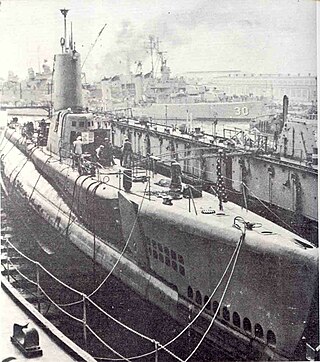
USS Medregal (SS-480/AGSS-480), a Tench-class submarine, was the only ship of the United States Navy to be named for the medregal, a streamlined, fast-swimming, bluish-colored fish of the jack family which abounds in waters of the West Indies and in the Atlantic as far north as the Carolinas.

USS Howard (DD–179), (DMS-7) was a Wickes-class destroyer in the United States Navy during World War II. She was named for Charles W. Howard, who was killed in the American Civil War aboard USS New Ironsides.

USS Wright (AZ-1/AV-1) was a one-of-a-kind auxiliary ship in the United States Navy, named for aviation pioneer Orville Wright. Originally built as a kite balloon tender, she was converted into a seaplane tender after kite balloons were no longer used.

USS Childs (DD-241/AVP-14/AVD-1) was a Clemson-class destroyer in service with the United States Navy from 1920 to 1945. She was scrapped in 1946.
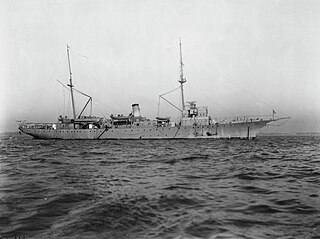
USS Sumner (AG-32/AGS-5) was a survey ship in the United States Navy. She was named in honor of Thomas Sumner. She was originally commissioned as a submarine tender as USS Bushnell (AS-2/AG-32), in honor of David Bushnell, the inventor of the first American submarine.
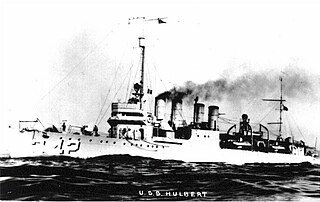
USS Hulbert (DD-342/AVD-6) was a Clemson-class destroyer in the United States Navy following World War I. She was named for Henry Hulbert.

USS Sicard (DD-346/DM-21/AG-100) was a Clemson-class destroyer in the United States Navy following World War I. She was named for Montgomery Sicard.

USS Rowe (DD-564) was a Fletcher-class destroyer of the United States Navy.

USS Herald (AM-101) was an Auk-class minesweeper acquired by the United States Navy for the dangerous task of removing mines from minefields laid in the water to prevent ships from passing.

USS Gilmore (DE-18) was an Evarts-class short-hull destroyer escort in the service of the United States Navy.
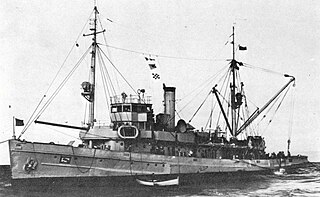
The first USS Ortolan(AM-45/ASR-5) was a Lapwing-class minesweeper in the United States Navy. She was later converted to a submarine rescue ship. She was named after the ortolan, a European bunting.

USS Argonne (AP-4/AS-10/AG-31) was a Design 1024 cargo ship built under United States Shipping Board contract by the International Shipbuilding Corp., Hog Island, Pennsylvania, for the United States Department of War. Named Argonne for the U.S. Army's Meuse-Argonne campaign in World War I, she was completed in 1920, delivered to the War Department in December 1920, laid up in February 1921, and loaned to the Navy on 3 November 1921. Accepted preliminarily by the Navy on that date, she was commissioned as Argonne on 8 November 1921 at the Philadelphia Navy Yard. The ship was permanently transferred to the Navy 6 August 1924 by Executive Order.

USS Sandpiper (AM-51) was a Lapwing-class minesweeper. Laid down on 15 November 1918 at the Philadelphia Navy Yard, Philadelphia, Pennsylvania, and launched on 28 April 1919, USS Sandpiper was commissioned on 9 October 1919, redesignated AM-51 on 17 February 1920, and reclassified as a Small Seaplane Tender, AVP-9 on 22 January 1936.

USS Fulton (AS-11) was the leader of her class of seven submarine tenders, launched on 27 December 1940 by Mare Island Navy Yard and sponsored by Mrs. A. T. Sutcliffe, great-granddaughter of Robert Fulton. Fulton was commissioned on 12 September 1941.
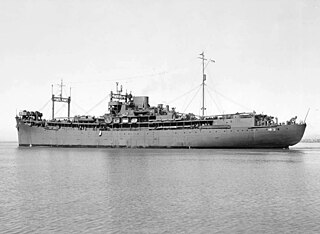
USS Griffin (AS-13), originally Mormacpenn, a United States Maritime Commission Type C3 pre-war cargo ship, was launched by Sun Shipbuilding & Dry Dock, Chester, Pennsylvania, 11 October 1939. She served briefly with Moore-McConnack, Inc., was acquired by the Navy in 1940, renamed Griffin (AS-13) and converted to a submarine tender at Robbins Dry Dock and Repair Company, Brooklyn, N.Y. Griffin commissioned 31 July 1941.

USS Bushnell (AS-15) was a Fulton-class submarine tender in service with the United States Navy from 1943 to 1948 and from 1952 to 1970. She was finally sunk as a target ship in 1983.

USS Orion (AS–18) was a Fulton-class submarine tender of the United States Navy. She was laid down 31 July 1941 at the Moore Dry Dock Company, Oakland, California; launched 24 June 1942; sponsored by Mrs. Robert A. White; and commissioned 30 September 1943.

USS Sierra (AD-18) was a Dixie-class destroyer tender built just before the start of World War II for the U.S. Navy. Her task was to service destroyers in, or near, battle areas and to keep them fit for duty.





















